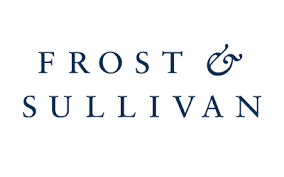Why AI and ML go hand-in-glove with IoT
)
The future of Internet of Things (IoT) has the potential to be limitless. The total installed base of IoT connected devices in the world is estimated to grow to almost 31 billion by 2025. From connected cars, smart cities, smart home devices to connected industrial equipment, an exciting wave of IoT applications are set to emerge, brought to life through intuitive human to machine interactivity.
These advances in IoT will be accelerated by increased network agility and the ability to automate diverse use cases. IoT’s potential is not just the deployment of billions of devices but leveraging the data from those devices, for actionable insights. It is predicted that in the next four years, IoT devices in the world will generate 90 zettabytes of data.
Some technologies are inevitably bound together. Artificial intelligence (AI) and IoT are a perfect example of two technologies that complement each other while being tightly connected. In the fast-growing world of IoT applications, which connect and share data across a vast network of devices, organizations need analytics.
This is the ability to make rapid decisions and uncover deep insights as they continuously learn from massive volumes of IoT data. AI is an essential part of analytics that helps expand the overall value of IoT. By leveraging Deep/Machine Learning (ML) and AI, businesses can predict the needs of their customers and networks, automate preventive actions, and tailor their products and services based on derived behavioral insights.
The key aspect of autonomous systems is better decision making and to provide automatic smart behavior for industrial machines, smart cities, and devices working in any environment. IoT sensors digitize the physical world, the data is produced at different velocities – this data is sometimes raw like a video format or structured like RFID data. To process this data, whether raw or structured, at the edge, deep machine learning models are required.
For example, a smart city project needs to install high-definition traffic cameras for better law enforcement. These cameras need to capture speed, registration numbers and flag illegal driving activities. Sensors need to statistically compress the data at source, extract information from the noise to send relevant information centrally and help provide local insights about devices in the environment.
While data is ingested at different velocities, it needs to provide accurate context. Also, the speed at which these events need to be processed and how much of it needs to be stored to derive actionable insights, is critical. Such systems need historical data to improve insights and provide better decision making. While data is captured in different layers and shapes, they need to be fused together in near real-time, for the best of insights.
This is where ML and deep learning tools help generate useful insights. These tools not only direct the sensors on what to capture but fuse the layers together to share reports to the authorities in real-time. AI, ML and analytics can help optimize customer life cycles (in this case the law enforcement authorities) and have them efficiently use all resources to strengthen their activities. The insights from data drive customers’ life cycle, generate a plan to use the correct resources, and protect against risk.
AI and ML analytics in IoT realize productivity, efficiency, and effectiveness gains by using semantics to transform raw data into actionable insights. It provides value from harnessing the challenges posed by the volume and variety of big data, and in turn providing actionable information and improved decision making. The convergence of AI and ML paves the way for advancement in efficiencies, accuracy, productivity, and overall cost-savings for resource-constrained IoT devices. When AI and ML analytical algorithms and IoT work together, organizations can use this for better overall communication, real-time computation of needs, and better controllability of data.
Common challenges organizations face today are with application, accessibility, and analysis of IoT data. While most are using AI and ML to run some form of statistical analysis, the leading ones are using it to be proactive and to predict events for future insights. Such AI-enabled IoT systems can automatically and continually provide relevant insights for these organisations, by taking advantage of the enormous amount of data continuously streaming into their internal systems.
These technologies are enabling the next level of automation and productivity while doing so at ever decreasing costs. As consumers, businesses, and governments start to control IoT in a variety of different ways, optimizing data through analytics will change how we go about our lives and allow us to make better choices.
Original article: https://cio.economictimes.indiatimes.com/news/internet-of-things/why-ai-and-ml-go-hand-in-glove-with-iot/85646171


 Cloud & AI Infrastructure
Cloud & AI Infrastructure
 DevOps Live
DevOps Live
 eCommerce Expo | DMEXCO Asia
eCommerce Expo | DMEXCO Asia

)
)
)
)
)
)
)
)
)
)
)
)
)
)
)
)
)
)
)
)
)
)
)
)
)
)
)
)
)
)
)
)
)
)
)
)
)
)
)
)
)
)
)
)
)
)

)
)
)
)
)
)
)
)
)
)
)
)
)
)
)

)
)
)
)
)
)
)
)
)
)
)
)
)
)
)
)

)
)
)
)
)
)
)
)
)
)
)
)
)
)
)
)
)
)
)
)
)
)
)
.png/fit-in/1280x9999/filters:no_upscale())
)
)
)
)
)
)
)
)
)
)
)

)
)
)
)
